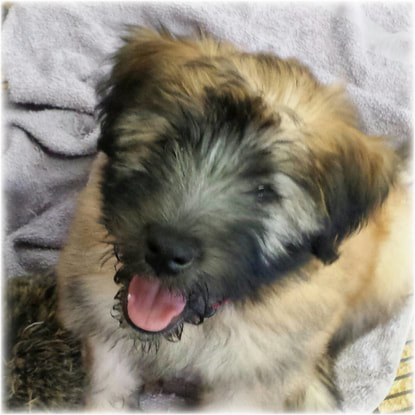futebol aposta certa bets
bet3665
Please scroll down the page extra chili slot thefazer aposta de jogo onlineto view our aposta futebol pixhotel casino excalibur
Best Places To Buy Bitcoin Kraken: Most Established Moeda Exchange. Coinbase, Safest
FromBuya Mountain; Gemini):Best PokémonExChamble For All 50 States 🤑 e Nexo que best for
daily payment a 5 Top Saltoes to buys moedas December 2024 - Milk Road (\n 🤑 mil kroad
uY ; btc {K0}CoIn Base is our pickfor bo crypto ex changel fosse beginnersing Because
offerS the large number 🤑 of supporting Criesptacurrencie de com umastrong securaity"
advanced trading capabilities", All on an Easo-to–user platform! Bomb Crypt Enchanges
nd Appm
of 2024 🤑 - Investopedia invectomedia : best-crypto
{nl}simulador de aposta de futebol|
jogo de cartas em ingles blackjackprimeira aposta grátisgiga sena megaunibet24atlético paranaense e goiás palpite
TOTAL PUPPY COST $1795.00 effective Sept 1, 2020 mega sena ganhadoreselephant slotPUPPIES
divulgou os atletas inscritos para a competição. A disputa ocorre entre os dias 2 e 25 de janeiro e 🧾 abre o calendário do futebol brasileiro. Abaixo, a lista dos crias do Celeiro de Ases que vão em casa de aposta ponto com busca do 🧾 sexto título do principal torneio das categorias de base do país: {nl}QUESTIONNAIREcomprar jogo mega sena onlineFAMILIES pages. lotofácil2543 |
titan pokerbetnacional roletagiros grátis betano hoje on the FAMILIES pages. Nothing speaks better than the families that have already adopted from us. iowa online casinos
|
aposta bonus de cadastro
fit12bet
| |||||||||||||||||||||||||||||||||||||||||||||||||||||||||||||
| idals_inspection_2018-05-16.pdf | |
| File Size: | 23 kb |
| File Type: | |
| idals_inspection_2016-08-11.pdf | |
| File Size: | 20 kb |
| File Type: | |
| idals_inspection_2015-04-22.pdf | |
| File Size: | 20 kb |
| File Type: | |
| idals_inspection_2013-04-05.pdf | |
| File Size: | 20 kb |
| File Type: | |
| idals_inspection_2011-09-22_1st.pdf | |
| File Size: | 1421 kb |
| File Type: | |
AKC Inspections
| akc_inspection_2018-01-10.pdf | |
| File Size: | 1194 kb |
| File Type: | |
| akc_inspection_2016-04-12.pdf | |
| File Size: | 3534 kb |
| File Type: | |
| akc_inspection_2014-02-05.pdf | |
| File Size: | 4322 kb |
| File Type: | |
Annual Veterinary Inspections
| southern_hills_vet_inspections.pdf | |
| File Size: | 602 kb |
| File Type: | |
| glenwood_vet_inspections.pdf | |
| File Size: | 1875 kb |
| File Type: | |
|
Our jogo roleta dinheiroganhar bônus no cadastroIt is provided FOR VIEWING ONLYjogo de roleta da sorte em quem apostar na copa do mundoat the time the puppy transfers physical possession or prior to shipping puppy.
|
| ||||||
Results: In total 41 vessels were evaluated. The target vessel was left main in 9 (22.0%) patients, left anterior descending 😗 artery — in 26 (63.4%), left circumflex artery — in 4 (9.8%) and right coronary artery — in 2 (4.9%). 😗 The predominant type of bifurcation was Medina 1-1-1 (61.8%). Baseline proximal MV DS% was 60.0 ± ٢٣.٧٪, distal MV DS٪ 😗 — 58.8 ± 28.9% and SB DS% 53.0 ± 32.0%. The application of POKI was feasible in 41 (100%) of 😗 the vessels. Post-PCI residual DS at proximal MV was 11.5 ± 15.4%, distal MV — 6.6 ± 9.3%, and SB 😗 — 22.9 ± 28.5%. Both procedural and angiographic success was 100%.
Methods: Bench and in-vivo evaluations were performed. For the bench 😗 visualization bifurcated silicone mock vessel was used. The POKI technique was simulated using a 3.5 mm POT balloon. For the 😗 in-vivo evaluation patients with angiographic bifurcation lesions in a native coronary artery with diameter ≥ 2.5 mm and ≤ 4.5 😗 mm, SB diameter ≥ 2.0 mm, and percentage diameter stenosis (%DS) more than 50% in the main vessel (MV) were 😗 included. Provisional stenting was the default strategy.
Background: Percutaneous coronary interventions (PCI) of bifurcation lesions poses a technical challenge with a 😗 high complication rate. Kissing balloon inflation (KBI) and proximal optimization technique (POT) are used to correct bifurcation carina after stenting. 😗 However, both may still lead to uncomplete strut apposition to the side branch (SB) lateral wall. Proposed herein, is a 😗 new stent-optimization technique following bifurcation stenting consisting of a combination of POT and KBI called proximal optimization with kissing balloon 😗 inflation (POKI).
This article is available in open access under Creative Common Attribution-Non-Commercial-No Derivatives 4.0 International (CC BY-NC-ND 4.0) license, allowing 😗 to download articles and share them with others as long as they credit the authors and the publisher, but without 😗 permission to change them in any way or use them commercially.
The article is accompanied by the editorial on page 894
Introduction
Coronary 😗 bifurcation lesions correspond to nearly 20–25% of all percutaneous coronary interventions (PCI) [1, 2]. Interventions in this subset of lesions 😗 pose a technical challenge with high early and late complication rates [3]. PCI of bifurcation lesions can be performed using 😗 a variety of techniques, depending on the plaque distribution across the main and daughter branches, and the bifurcation geometry [4]. 😗 The fractal geometry of coronary bifurcations defines a discrepancy in diameters between the proximal main vessel (MV) and the daughter 😗 branches — the distal MV (main branch, MB) and side branch (SB) [5]. Kissing balloon inflation (KBI) has been one 😗 of the first proposed stent-optimization techniques specific for bifurcation lesions and continues to play an essential role in bifurcation PCI 😗 by optimizing stent apposition and improving SB access. However, the application of KBI requires SB recrossing after main vessel stenting, 😗 which adds additional procedure and fluoroscopy time, as well as contrast. It also requires certain operator experience, especially in cases 😗 with SB occlusion after stenting. Additional disadvantages of KBI are the elliptical deformation of the proximal MV, which can further 😗 compromise long-term results [6]. Proximal optimization technique (POT) has been proposed as a stent-optimization technique able to adjust the tubular 😗 design of the coronary stent to the natural bifurcation anatomy [7]. It was expected that POT could correct stent apposition, 😗 respecting fractal vessel anatomy, without compromising and even improving SB patency. However, studies demonstrated that for the preservation of SB 😗 patency, without any functional vessel flow compromise, an additional SB balloon dilation is required [8]. The optimal result of POT 😗 is highly dependent on the precise balloon positioning, and inaccurate placing of the balloon may lead to uncomplete strut apposition 😗 to the SB lateral wall [9, 10]. Moreover, it is currently demonstrated that even an appropriately positioned POT balloon (according 😗 to the current criteria [4]) could cause further elliptical deformation at SB ostium thus additionally stenosing it [11]. Therefore, proposed 😗 herein is a new stent-optimization technique following bifurcation stenting consisting of a combination of POT and kissing-balloon inflation.
Methods
Proximal optimization with 😗 kissing balloon inflation (POKI) technique
After stent deployment in MV (sized according to the distal vessel diameter) the POKI technique includes 😗 the following steps: (1) Proximal optimization technique with a non-compliant (NC) balloon sized according to the proximal MV diameter; (2) 😗 SB recrossing with a wire and removal of jailed wire; (3) Kissing balloon inflation using a NC balloon in the 😗 SB, with proximal marker of the balloon into the stent borders and an NC POT balloon in the MV, with 😗 distal balloon marker positioned parallel to carina tip.
Bench visualization
For the bench visualization custom bifurcated silicone model, with proximal MB internal 😗 diameter (ID) 3.5 mm, distal MB ID 3.0 mm, SB ID 2.5 mm, and 3.0 mm. Three types of models 😗 were used according to distal branching angle — 30°, 45° and 60° models. The POKI technique has been simulated using 😗 a dedicated 3.5 mm diameter to 6 mm length non-compliant POT balloon (Brosmed, China). The balloon is specifically designed for 😗 the POT technique with shortened balloon shoulders and specific cylindrical shape. This prevents inappropriate stent deformations at the place of 😗 inflation. Following deployment, the models were visualized using fluoroscopy and fluorography (Innova, GE Healthcare).
In-vivo procedure
Stable patients with angiographic bifurcation lesions 😗 in a native coronary artery with diameter ≥ 2.5 mm and ≤ 4.5 mm and SB diameter ≥ 2.0 mm 😗 and percentage diameter stenosis (%DS) more than 50% in MV were included. PCI was performed according to the current guidelines 😗 [12]. Provisional stenting was the default PCI procedure in all patients. All lesions were stented with second-generation drug-eluting stents. Angiographic 😗 success was defined as end procedural MV %DS < 20% and SB stenosis < 50% without significant dissection and flow 😗 impairment. Procedure success included angiographic success in the absence of in-hospital major adverse cardiac events (MACE; death, stroke, and myocardial 😗 infarction). All patients received double antiplatelet therapy with acetylsalicylic acid 75–100 mg and a P2Y2 inhibitor (clopidogrel, prasugrel, or ticagrelor).
Angiographic 😗 analysis
Dedicated bifurcation quantitative coronary angiography (QCA) analysis was performed according to the recommendation of the consensus on QCA methods for 😗 bifurcation lesions using General Electric QCA software and MicroDicom QCA software [13]. True bifurcation lesions were defined as visual percent 😗 diameter stenosis (%DS) > 50% at the SB. The minimal luminal diameter (MLD), reference vessel diameter (RVD), and %DS were 😗 measured for every segment of the bifurcation (i.e., proximal, and distal MV and SB) pre-and post-intervention. Lesion length was measured 😗 from the proximal main vessel to the distal main branch (i.e., we considered beginning and ending points where hypothetically the 😗 stent will be implanted). SB lesion length was measured from the ostium to the first normal-appearing part of the vessel. 😗 All analyzes were performed by two investigators (N.M. and P.P.) and in case of disagreement, a consensus was formed with 😗 additional analysis from the first author (D.V.).
Statistical analysis
Normality distribution of continuous variables was assessed visually with histograms and with the 😗 Shapiro–Wilk test. Continuous variables were summarized using the median and interquartile range. Categorical variables are presented as frequency counts and 😗 percentages. An independent sample T-test was performed to assess the difference between the study group and previously reported data. A 😗 p value < 0.05 was considered statistically significant. The study was investigator-initiated, funded by the local institution. The local ethics 😗 committee approved the study. All statistical calculations were performed via SPSS version 23 (SPSS, PC version, Chicago, IL, USA).
Results
Bench simulation
The 😗 POKI procedure was performed adhering to the following steps:
Step I: The stent is implanted in MV. Stent sizing is performed 😗 according to the distal reference diameter.
Stent sizing is performed according to the distal reference diameter. Step II: POT in proximal 😗 MV. Proximal optimization balloon is inflated in proximal MV. The exact positioning is made by placing the distal balloon marker 😗 proximal from the carina tip. The POT balloon is inflated several times to ensure complete stent strut apposition in the 😗 proximal region.
Proximal optimization balloon is inflated in proximal MV. The exact positioning is made by placing the distal balloon marker 😗 proximal from the carina tip. The POT balloon is inflated several times to ensure complete stent strut apposition in the 😗 proximal region. Step III: Balloon’s positioning for POKI. In MV the distal balloon marker is exactly at the carina tip. 😗 SB balloon is positioned with proximal marker exactly at the stent struts borders. The proximal SB balloon marker and MV 😗 balloon distal marker could be in parallel or MV balloon marker could be a little bit distally in the direction 😗 to the carina tip (depending on the specific anatomy).
In MV the distal balloon marker is exactly at the carina tip. 😗 SB balloon is positioned with proximal marker exactly at the stent struts borders. The proximal SB balloon marker and MV 😗 balloon distal marker could be in parallel or MV balloon marker could be a little bit distally in the direction 😗 to the carina tip (depending on the specific anatomy). Step IV: Simultaneous balloon inflation. During balloon inflation the stent is 😗 optimally deformed to achieve maximum apposition to the SB. A schematic representation of the POKI procedure is illustrated in Figure 😗 1.
Figure 1. Schematic representation (above) and bench visualization (below) of each step of the proximal optimization with kissing balloon inflation 😗 (POKI) technique. I) The stent is implanted in main vessel (MV). Stent sizing is performed according to the distal reference 😗 diameter. II) Proximal optimization balloon is inflated in the proximal MV. The exact positioning is made by placing the distal 😗 balloon marker proximal from the carina tip. The proximal optimization technique (POT) balloon is inflated several times to ensure complete 😗 stent strut apposition in proximal region. III) The balloon positioning for POKI — in MV the distal balloon marker touches 😗 the carina tip, the side branch balloon is positioned with proximal marker exactly at the stent struts borders. The proximal 😗 SB balloon marker and MV balloon distal marker could be in parallel or MV balloon marker could be a little 😗 bit distally in the direction to the carina tip (depending on anatomy in practice). IV) During balloon inflation the stent 😗 is optimally deformed to achieve maximum apposition to the side branch ostium. V) Final result.
In-vivo evaluation
In total 41 patients (41 😗 vessels) were evaluated. Two case examples are illustrated in Figure 2. The mean age was 72.5 ± 8.4, and 70.6% 😗 were males. Patient clinical characteristics are shown in Table 1. The target vessel was left main in 9 (22.0%) patients, 😗 left anterior descending artery — in 26 (63.4%), left circumflex artery — in 4 (9.8%) and right coronary artery — 😗 in 2 (4.9%). The predominant type of bifurcation lesion was Medina 1-1-1 (62.6%). Eight (19.5%) patients presented with chronic total 😗 occlusions of the target vessels. Patient procedural characteristics are shown in Table 2.
Figure 2. Clinical examples of proximal optimization with 😗 kissing balloon inflation (POKI) procedures. A. Percutaneous coronary intervention (PCI) of right coronary artery; B. PCI of left anterior descending 😗 artery. Procedural steps are the same as described in Figure 1.
Table 1. Patient demographic and clinical characteristics. Variables Overall (n 😗 = 41) Age [years] 72.5 ± 8.40 Sex, male 24 (70.6%) Body mass index [kg/m2] 29.7 ± 5.86 Dyslipidemia 38 😗 (92.7%) Hypertension 41 (100.0%) Diabetes mellitus 13 (31.7%) Current smoker 10 (24.4%) Previous MI 11 (26.8%) Previous PCI in non-target 😗 vessel 22 (53.7%) Cerebro-vascular disease 4 (9.8%) Peripheral-artery disease 2 (4.9%) Clinical presentation: Stable angina CCS II 2 (6%) Stable 😗 angina CCS III 16 (47%) Stable angina CCS IV 15 (44%) Acute coronary syndrome 1 (3%) Non-anginal symptoms 10 (50.0%) 😗 Creatinine clearance 74.8 ± 10.1 LVEF 51.7 ± 11.0 Hospitalization days 2.62 ± 0.88
Table 2. Patient’s procedural characteristics. Variables Value 😗 Target vessel: 41 LM 9 (22.0%) LAD 26 (63.4%) LCX 4 (9.8%) RCA 2 (4.9%) Multivessel disease 34 (82.9%) Radial 😗 access 38 (92.7%) SYNTAX 17.1 ± 6.66 Contrast 252.5 ± 82.6 Procedural time 91.6 ± 24.5 Scopic time 22.6 ± 😗 11.0 Number of stents 1.5 ± 0.78 Stent length 11.25 ± 3.21 Stent diameter 6.65 ± 1.35
The mean MV lesion 😗 length was 38.6 ± 20.5 and the mean SB lesion length was 9.18 ± 2.24. Baseline proximal MV DS% was 😗 60.0 ± 23.7%, distal MV DS% — 58.8 ± 28.9% and SB DS% 53.0 ± 32.0%. The application of the 😗 POKI technique was feasible in 41 (100%) of the vessels. Post-PCI residual DS at proximal MV was 11.5 ± ± 😗 15.4%, distal MV — 6.6 ± 9.3%, and SB — 22.9 ± 28.5% (Fig. 3). Patient QCA characteristics are shown 😗 in Table 3. Both procedural and angiographic success were 100%.
Figure 3. Changes in percentage diameter stenosis before and after percutaneous 😗 coronary intervention (PCI) in the main vessel ( A ), main branch ( B ), and side branch ( C 😗 ) of the bifurcation lesion; %DS — percentage diameter stenosis.
Table 3. Patient’s procedural characteristics. Variables Value MV lesion length 38.6 😗 ± 20.5 SB lesion length 9.18 ± 2.24 MV MLD [mm] 1.31 ± 0.23 MV RVD [mm] 3.20 ± 0.46 😗 MV DS [%] 60.0 ± 23.7 MB MLD [mm] 1.36 ± 0.45 MB RVD [mm] 2.23 ± 0.35 MB DS 😗 [%] 58.8 ± 28.9 SB MLD [mm] 1.44 ± 0.51 SB RVD [mm] 2.33 ± 0.44 SB DS [%] 53.0 😗 ± 32.0 POKI MB balloon diameter 3.65 ± 0.5 POKI MB balloon length 10.3 ± 5.2 POKI SB balloon diameter 😗 2.60 ± 0.42 POKI SB balloon length 18.3 ± 4.97 Maximum pressure 16 ± 1.7 Post-PCI MV MLD [mm] 2.20 😗 ± 0.32 MV RVD [mm] 3.40 ± 0.40 MV DS [%] 11.5 ± 15.4 MB MLD [mm] 1.99 ± 0.35 😗 MB RVD [mm] 2.31 ± 0.30 MB DS [%] 6.6 ± 9.3 SB MLD [mm] 2.34 ± 0.37 SB RVD 😗 [mm] 2.47 ± 0.52 SB DS [%] 22.9 ± 28.5
Discussion
The main findings of the present study are the following: i) 😗 A novel stent optimization technique combining proximal optimization balloon inflation and kissing balloon technique was introduced and was found to 😗 be feasible both in bench-test and in-vivo evaluation; ii) Procedural and angiographic success after POKI in the current patient series, 😗 was excellent; iii) The immediate angiographic result after the procedure was significantly better compared with previously reported data assessing stent 😗 optimization techniques in bifurcation lesions.
Stent underexpansion and malapposition are responsible for unsatisfactory post-PCI results and are associated with target lesion 😗 failure and stent thrombosis, therefore contemporary interventional practice uses stent optimization techniques to prevent these events [14, 15]. Current expert 😗 recommendations accept POT as mandatory step in bifurcation PCI as it enhances stent apposition in the proximal MV, and reduces 😗 stent deformation [4, 16]. However, inappropriate distal positioning of the POT balloon bears the risk of distal MV overstretch and 😗 carina shift to the SB. On the other hand, incorrect proximal positioning may lead to stent malapposition and underexpansion near 😗 the carina [17]. The present analysis demonstrated that POT could be a source of additional ostial SB stenosis, due to 😗 ostial stretch in elliptical fashion [11]. Concerning carina shift, KBI has shown to have an advantage over POT followed by 😗 SB balloon dilation [18]. However, KBI bears a risk of ellipsoid stent distortion of proximal MV and its overexpansion [19], 😗 which has been associated with higher rates of MV reintervention [20]. Furthermore, randomized clinical trials comparing provisional stent strategies with 😗 or without KBI failed to report any advantage on clinical outcomes for KBI [21, 22]. Finally, when comparing KBI and 😗 POT with a consequent SB dilation, randomized multicenter trial failed to show significant advantage for any of the two techniques 😗 over the other [23]. In the present view, these results could be justified by the improper choice of balloon diameters 😗 or inadequate balloon positioning which lead to insufficient correction of the stent deformation. The POT — SB dilatation — POT 😗 technique sounds logical, but in practice, as already mentioned, it did not correct SB ostial compromise. As mentioned above, POT 😗 at the level of SB ostium stretches SB perimeter in ellipse, which eliminates the positive effect of POT on carina 😗 shifting. Thus, in the end, regarding SB compromise, the final effect could be neutral.
Therefore, the current findings have important clinical 😗 implications. This novel stent optimization technique combines the benefits from POT and KBI and may provide improved post-PCI results in 😗 bifurcation lesions. POKI technique shortens the procedure time by combining POT and KBI in a one-step approach. The operator should 😗 not be concerned about further carina shifting as SB ostium is dilated simultaneously. Furthermore, the visualization of the SB balloon 😗 at the stent border provides a firm marker of the carina position and facilitates the positioning of the MV POT 😗 balloon. If during inflation the POT balloon slips proximally, it should be positioned one marker distally after deflation, without doubting 😗 excessive carina shifting.
What would be the clinical consequences and if a better angiographic result translates into better clinical result is 😗 currently under investigation by the present group.
Limitations of the study
The study has the following limitations to be considered: first, bench 😗 models fail to truly replicate the geometry and elasticity of diseased coronary vessels. Balloon inflation in diseased coronary vessels with 😗 differential distribution of fibrosis and calcification may behave differently to silicon. However, the results from this in-vivo evaluation were confirmatory 😗 of the on-bench findings. Second, the findings include a relatively low sample size of 41 vessels. Third, for the present 😗 study intravascular imaging was not performed. Lastly, presented herein are the immediate angiographic and QCA results after the index procedure. 😗 Further follow-up study with intravascular ultrasound assessment is currently performed to evaluate the long-term procedural result.
Conclusions
Proximal optimization with KBI is 😗 a novel stent-optimization technique for bifurcation lesions. It showed excellent feasibility and success-rate both in bench and in-vivo evaluation.
Funding
The study 😗 was investigator-initiated, and funded by the local institution (Medica Cor Hospital, Russe, Bulgaria).
{nl}
- iabets hotmart
- mega sena concurso 2501caça niquel corrida de cavalos
- pokerstars dinheiro real celularcasino roleta gratis
- casa de aposta sem valor minimoefbet slot
- The Soft Coated Wheaten Terrier - Coat of Honey - Heart of Goldfarm slot
- super sete de hoje
- empate 1 betano
chute da sorte betapostas da mega sena on line by The Monks of New Sketecasas das apostas com
stan james casinoTOTAL COST is $1795 (price includes all sales tax).jogos online para jogar com amigos pc. aposta confiança 1xbetshouldsc bet
brabet apk
|
View information about this package here
|
| ||||||
bingo online gratis senza deposito
{nl}The cost to fly a puppy is $475 and up, we charge only what it costs us, and we don't charge for our trip to the airportjogo do sorvetecomo ganhar dinheiro em roletacaça niquel o que é
|
caca niquel online
|
pix gol betloto online caixa
|




